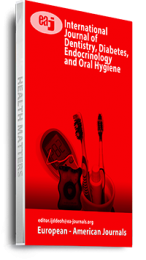Background: The plant Ficus capensis is found in Sub-Saharan Africa, South Africa and South America. It is used for threatened abortion, rheumatism, fever, epilepsy, and traditional cure of diabetes mellitus in south-western Nigeria. Diabetes mellitus describes a metabolic disorder of characterized by chronic hyperglycaemia with disturbances of carbohydrate, fat and protein metabolism resulting from impairments in insulin secretion, insulin action or both Objective: This study was aimed at evaluating the antihyperglycaemic effect of the methanol stem-bark extract of Ficus capensis (Thunb) and its fractions on alloxan induced hyperglycaemia in Wistar rats. Method: methanol stem bark extract of Ficus capensis (MSFCE) and its Fractions {Ethyl Acetate Fraction (EAF), n-Butanol Fraction (NBF), and Residual Aqueous Fraction (RBF)} were subjected to preliminary phytochemical screening, Oral median lethal dose (LD50) was estimated, the antihyperglycaemic activity of the extract and its fractions at doses of 100, 200, and 400 mg/kg body weight orally on Alloxan-Induced Hyperglycaemia in Wistar rats was investigated and were carried out. Thirty six (36) were divided into six (6) groups of six (6) rats each. The first group (normal rats) served as the negative control received Distilled water 1 ml/kg, the 2nd group (hyperglycaemic control) while the 3rd, 4th, 5th ( hyperglycaemic rats) received MSFCE and its fractions at doses of (100, 200 and 400 mg/kg respectively) and the 6th group of hyperglycaemic rats received Metformin 100 mg/kg served as positive control. The treatments were given orally and once a day. Results: Preliminary phytochemical constituents of the extract and its fractions revealed the presence of alkaloids, cardiac glycosides, flavonoids, saponins, tannins, steroids, phenols and triterpenes. LD50 of the extract and its fractions in Wistar rats were found to be greater than 5,000 mg/kg bw p.o. The extract at its fractions at tested doses (100, 200 and 400 mg/kg bw) significantly (p<0.05, 0.01 and 0.001) decreased blood glucose level after 2, 4, 8, 16 and 24hr post administration when compared with diabetic control). On comparison over time from zero hr, the extract and its fractions at doses tested (100, 200, and 400 mg/kg) exhibited significant (p<0.05, 0.01 and 0.001) decreased blood glucose levels after the 2nd, 4th, 8th and 16th hr after administration. Conclusion: These findings suggest that the extract and its Fractions possess antihyperglycaemic property which supports the ethno medical use of the plant in the management of diabetes mellitus.
Keywords: Ficus capensis extract and its fraction, alloxan and blood glucose

